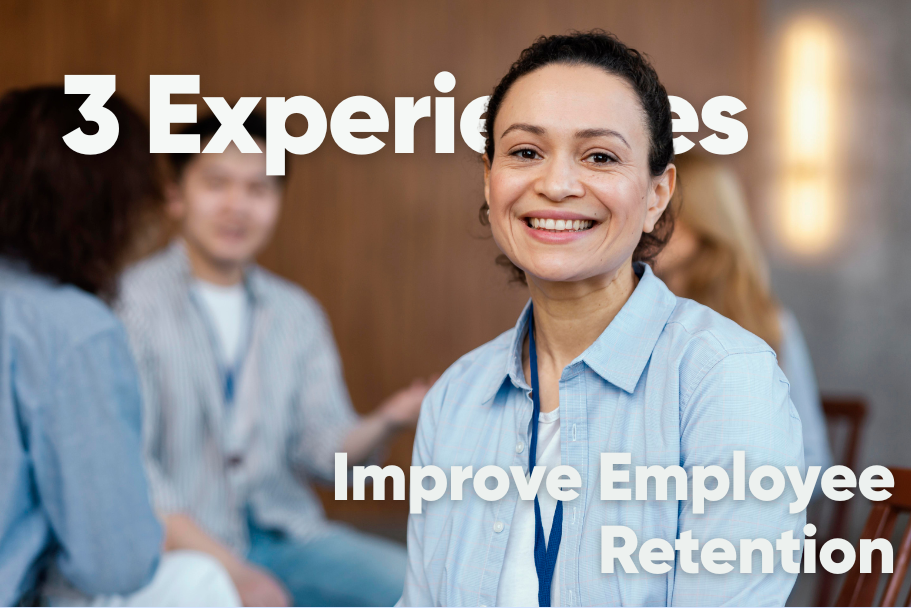
Best Workplaces, Employee Engagement , Employee Survey
We all know the health care industry is in a state of flux. Direct care organizations are grappling with systemic issues that the pandemic brought to the forefront quick and clear. Pharmaceuticals are being asked to do more both in terms of filling some direct care gaps as well as bringing new drugs to market to address rapidly evolving heath care issues. And biotech firms are trying to stay at least a few steps ahead as they research new therapeutics and develop new technologies to improve human health.
Bearing the brunt of this uncertainty and change are the workers. And this is precisely why employee engagement surveys are so important. These surveys help us understand the employee experience. They reveal trends and insights that guide change and lead to best practice. And when done effectively, an employee engagement survey is your premier tool for ensuring your people remain committed to your organization and that they trust you to have their best interests in mind as you make business decisions.
Why Have an Employee Engagement Survey?
Perhaps the best answer to this question is the high level of support and trust experienced by employees at the Best Workplaces™ in Health Care. Using insights gained through their employee engagement surveys they continue to grow and respond to the current challenges; emerging strong and united with high levels of trust and performance.
Collectively, 91 percent of employees at the organizations on this list are proud to tell others they work there, and 88 percent agree that taking everything into account, their workplace is a great place to work. Remarkable endorsement given the stress and pressure within this industry!
By using employee engagement surveys effectively within your organization you too can realize this level of support and build a strong a vibrant culture that responds to challenges together. Here are some key benefits of using employee engagement surveys.
Give Employees a Voice
Employees generally want to provide feedback and employee surveys are the perfect opportunity to hear from everyone. Not all people are comfortable speaking directly to their manager or voicing their concerns in team meetings. When you ask questions in a survey however, you signal your openness to hearing their opinion and that their feedback is valued. This also helps employees realize their involvement helps shape company direction rather than feeling their opinion doesn’t matter. At the Best Workplaces in Health Care, 90 percent of employees agreed with the statement, “I feel I make a difference here.”
Organizations that promote and encourage employee voices can turn those voices and ideas into improvements in production, innovation and engagement. As part of the survey process make sure to share results with your people. This further solidifies your commitment to making sure people are heard and that the feedback they provide will actually be used to make improvements.
Understand Key Trends and Opportunities for Improvement
With employee engagement surveys you can measure areas of employee experience that impact their satisfaction and identify key trends. These surveys help discover what you are doing well and they identify gaps between employee expectation and reality. When you ask the right questions you can expect insights into a multitude of factors related to engagement and satisfaction like work-life balance, growth opportunities and fairness.
Data analysis can help you understand how all employees feel as well as what different employee groups are experiencing. Do your female employees feel fairly compensated? Do remote workers feel appreciated? How well are you helping your younger employees manage their professional development? With this depth of analysis you can start identifying key areas for improvement while making sure you keep doing more of the things that already contribute to high satisfaction.
Build Trust
After your analysis, it’s time for action. You’ve already shared results with your people because that’s a key part of giving employees a voice. Now you need to signal that the feedback will lead to change. This helps to build trust and shows your people you care about them and their careers and genuinely want them to experience job satisfaction in your workplace. 90 percent of employees on this Best Workplaces list agreed their manager genuinely seeks and responds to suggestions and ideas.
To build this trust through engagement means creating action plans based on the feedback received and involving people in the changes being made. Some insights might reveal straightforward plans for improvement; others may need you to create committees to further explore options. Be open and transparent with your actions. Provide updates regularly and re-survey as necessary. Keep your people in the loop and continue to collect and share their feedback as you make improvements and enact changes.
Influence Behaviour
The questions you ask on your employee engagement surveys are very important. Not only do they indicate what you believe is important for your people to feel engaged and satisfied, they also have the ability to influence the behavior of the survey taker. For instance, if you ask people how they feel about their opportunities for growth that plants a seed in their head that you are interested in helping them advance their career. This makes them more open to thinking about their long-term career with your organization and they may be more receptive to the opportunities already available to them as well as get excited about new initiatives that you introduce.
Remember, any opportunity for reflection is positive. By simply asking the question you open the door for improvement. This symbiotic effect of employee engagement surveys makes them all the more effective and compelling as a key driver for improvement within your organization. When developing your survey take time to think critically and reflectively on what you believe you can change as well as being open to new ideas for change that are revealed through the survey results.
Benchmark Data
Through collecting and tracking the results of your employee engagement surveys you gather valuable data that can be used to measure improvement over time. Knowing where you started and the gains you’ve made make for compelling evidence that you are indeed an organization that listens and that cares. When you can demonstrate quantitative improvements on the things that matter most, it speaks volumes about the culture you are cultivating and the priorities you hold.
Benchmarking also allows you to understand how your organization compares to others within your industry or your community. It helps determine whether the issues you are having are specific to your organization or are being experienced more broadly. This helps to inform your actions and determine who to consult for more information. Ultimately, benchmarked data helps you decide what factors you can best influence within your workplace allowing your improvements to be more targeted and successful in the long run.
Employee engagement surveys are a powerful tool for staying in touch with your people. They help you understand what your people are experiencing, they let your people know you can be trusted to take their concerns seriously, and they signal that you are prepared to make changes to improve your culture and build trust. The Best Workplaces in Health Care are using employee engagement surveys effectively and despite the high stress environment they are working in, their people are highly satisfied and ready to tackle new challenges knowing their employer is in their corner and prepared to help them navigate through.
If you’re not already using the Great Place to Work survey, reach out to us to learn about how we can help you improve employee engagement and become eligible for one of our Best Workplaces lists.
Learn more about Great Place to Work Certification.






